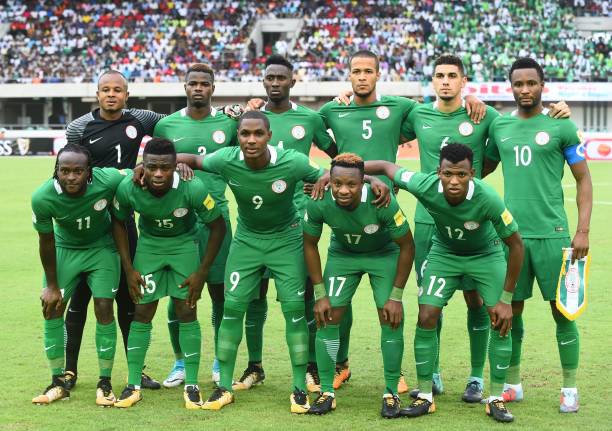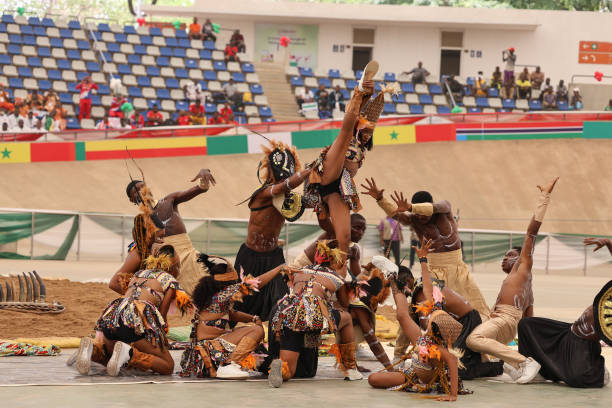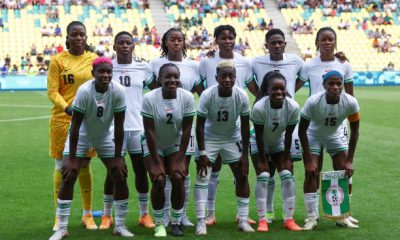
Introduction: The Super Eagles and Nigeria’s Football Infrastructure
The Super Eagles, Nigeria’s national football team, have long been a symbol of national pride and sporting excellence. From their historic Olympic gold medal in 1996 to their consistent presence in international tournaments, the Super Eagles have showcased Nigeria’s football prowess on the global stage. However, behind the scenes, the state of Nigeria’s football facilities has been a topic of concern. This essay delves into the current state of Nigeria’s football infrastructure, focusing on how it supports the Super Eagles and how it measures up to international standards.

Godswill Akpabio International Stadium: The Super Eagles’ Premier Home Ground
Located in Uyo, Akwa Ibom State, the Godswill Akpabio International Stadium stands as Nigeria’s most modern and internationally recognized football facility. Completed in 2014 at a cost of $96 million, the stadium boasts a seating capacity of 30,000 and features such as bulletproof VIP areas, electronic scoreboards, floodlights, and a helipad. Its design was inspired by Germany’s Allianz Arena, reflecting a commitment to international standards. The stadium has become the primary venue for Super Eagles’ home matches, earning the moniker “Nest of Champions.” Its ability to host high-profile matches underscores its significance in Nigeria’s football landscape.

Moshood Abiola National Stadium: A Monument of Potential
Situated in Abuja, the Moshood Abiola National Stadium is Nigeria’s largest stadium, with a seating capacity of 60,491. Constructed in 2003 for the All Africa Games, the stadium was built at a cost of $360 million, making it one of the most expensive stadiums globally. It features a velodrome, presidential suites, corporate boxes, and facilities for various sports, including athletics, swimming, and tennis. Despite its grandeur, the stadium has faced challenges related to maintenance and underutilization. Efforts are ongoing to restore it to its former glory and make it a consistent venue for Super Eagles’ matches.
Teslim Balogun Stadium: Reviving Lagos’ Football Heritage
The Teslim Balogun Stadium in Lagos holds historical significance as a former hub for Nigerian football. With a capacity of 24,325, it has hosted notable events, including matches during the 2009 FIFA U-17 World Cup. Recognizing its potential, the Lagos State Government has initiated rehabilitation efforts to restore the stadium and make it a regular venue for the Super Eagles. The aim is to rekindle Lagos’ rich football culture and provide the national team with a vibrant home ground in Nigeria’s most populous city.
SUGGESTED FOR YOU
Challenges Facing the Super Eagles’ Training Facilities
While Nigeria boasts several stadiums, the training facilities available to the Super Eagles have been a point of concern. Historically, players have reported inadequate training pitches, subpar accommodations, and insufficient medical facilities. These challenges have sometimes forced the team to train abroad or in less-than-ideal conditions, impacting preparation and performance. Addressing these issues is crucial for the team’s success and the development of football in Nigeria.
Comparing Nigeria’s Facilities to Global Standards
When juxtaposed with international football facilities, Nigeria’s infrastructure reveals a mix of strengths and areas needing improvement:
- Stadium Quality: While the Godswill Akpabio and Moshood Abiola stadiums meet international standards, consistent maintenance and modernization are essential to keep them competitive.
- Training Facilities: Top footballing nations invest heavily in state-of-the-art training complexes, offering players optimal preparation environments. Nigeria’s training facilities require significant upgrades to match these standards.
- Youth Development: Countries like Germany and Spain have comprehensive youth academies integrated with their national teams. Nigeria’s youth development programs need expansion and better integration with the Super Eagles’ framework.
The Role of Government and Private Sector in Infrastructure Development
Enhancing Nigeria’s football facilities necessitates collaboration between the government and the private sector:
- Government Initiatives: Allocating funds for stadium maintenance, upgrading training facilities, and supporting youth development programs are vital governmental responsibilities.
- Private Investment: Encouraging private entities to invest in football infrastructure can lead to the establishment of academies, sponsorships, and modernization projects, fostering a more robust football ecosystem.
Conclusion: Charting the Path Forward for the Super Eagles
The Super Eagles symbolize Nigeria’s footballing aspirations and achievements. To sustain and elevate their success, a concerted effort to improve football facilities is imperative. By addressing current challenges and investing in infrastructure, Nigeria can provide its national team with the tools needed to compete at the highest levels and inspire future generations of footballers.









